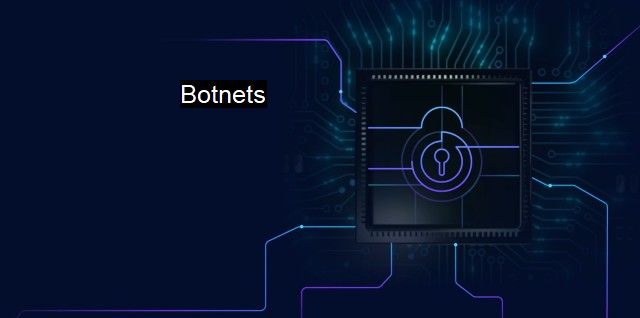What are Botnets?
Botnets and Cybersecurity: Understanding the Dangerous Implications and Latest Trends in Malware Infection
Botnets are networks of private computers infected with malicious software and are among the most widespread and problematic forms of cybersecurity abuses today. The term is a combination of 'robot’ and 'network', which is appropriate given that these are, indeed, interconnected networks of 'bots'.A botnet is created when an attacker successfully invades a computer system through various malicious schemes, such as embedding trojan viruses in seemingly harmless emails or software downloads. This action results in the infected computer turning into a 'bot' or zombie, which starts to perform tasks remotely programmed by the bot master or bot herder. Collectively, these corrupted systems form a botnet. What makes this even more distressing is, the owners of these infected systems are oblivious of their computer's clandestine operations.
Botnets can lead to numerous cybersecurity threats. It ranges from perpetrating Distributed Denial of Service (DDoS) attacks to conducting clicks fraud, spam distribution, and even stealing sensitive information. In a DDoS attack, the bot master instructs the botnet to overload the target's server with constant and numerous requests until it crashes. This could prove devastating for businesses, leading to hefty financial losses and reputational damage.
Botnets are also capable of committing click fraud, another worrying cybercrime activity. In this case, the botnets are programmed to click on a specific web advertisement repeatedly, making it seem like the ad has been viewed many times over. This posed threat deceives advertising entities by making them pay more while damaging their astute data analysis.
Spam distribution is yet another harm botnets can carry out. They can be directed to send mass unsolicited emails that can range from simple nuisances to harmful malware spread. Further still, receivers of the spam mail, once they interacted with the malicious content, could involuntarily be made a part of the botnet.
Arguably the most harmful action a botnet can execute is the theft of sensitive data. Personal information, enterprise details, and vital financial specifics can be coined from the botnet, posing a potent threat to data security. Encrypted data can be sold to cybercriminals, augmenting identity theft, financial fraud, espionage, and even terrorism.
Antivirus software plays a significant role in protecting systems from botnets. A good antivirus system which is regularly updated can detect and prevent a botnet intrusion. It can recognize and quarantine malicious files that may lead to botnet infection. antivirus software can perform proactive sweeps of the system to reveal any malicious software that has already infected the system.
Relying solely on antivirus protection isn't enough to combat this malicious network's prowess. It’s crucial to ensure updated firewalls and engage in safe browsing practices to reduce the risk of botnet infections. Users should avoid clicking on unfamiliar links and be cautious when downloading software from the internet. Regular system checks and updates, along with the latest security patches, can significantly minimize the chances of indefinite contamination.
Security awareness training and educational programmes can prove instrumental in thwarting botnets. People must become more familiar with possible signs of botnet contamination such as unusual traffic, sudden decrease in internet speed or unusual computer behaviour, among others.
Botnets pose a considerable cybersecurity threat that goes beyond damaging individual systems to adversely affecting global digital infrastructure at large. Safeguarding against such extensive threats calls for comprehensive and coordinated efforts. While cybersecurity tools like antivirus software form the frontline of defence, it is equally crucial for users to follow safe online practices. This includes regularly updating systems and security tools, adhering to verified and safe downloads, avoiding suspicious emails, hyperlinks and exercising situational awareness in the constantly evolving realm of cyber threats.

Botnets FAQs
What is a botnet?
A botnet is a network of infected computers that are controlled by a central command and control server.How do botnets infect computers?
Botnets typically infect computers through malware, such as viruses or Trojans, that are spread through email attachments, malicious links, or software vulnerabilities.What can botnets do to compromised computers?
Botnets can use compromised computers for a variety of malicious activities, including sending spam emails, launching distributed denial of service (DDoS) attacks, stealing sensitive information, and installing additional malware on the infected computers.How can I prevent my computer from becoming part of a botnet?
You can prevent your computer from becoming part of a botnet by keeping your antivirus and operating system up to date, avoiding suspicious emails and links, and using strong passwords. It’s also important to be cautious when downloading and installing software, and to use a reputable antivirus program that can detect and remove botnet infections.| | A | | | B | | | C | | | D | | | E | | | F | | | G | | | H | | | I | | | J | | | K | | | L | | | M | |
| | N | | | O | | | P | | | Q | | | R | | | S | | | T | | | U | | | V | | | W | | | X | | | Y | | | Z | |
| | 1 | | | 2 | | | 3 | | | 4 | | | 7 | | | 8 | | |||||||